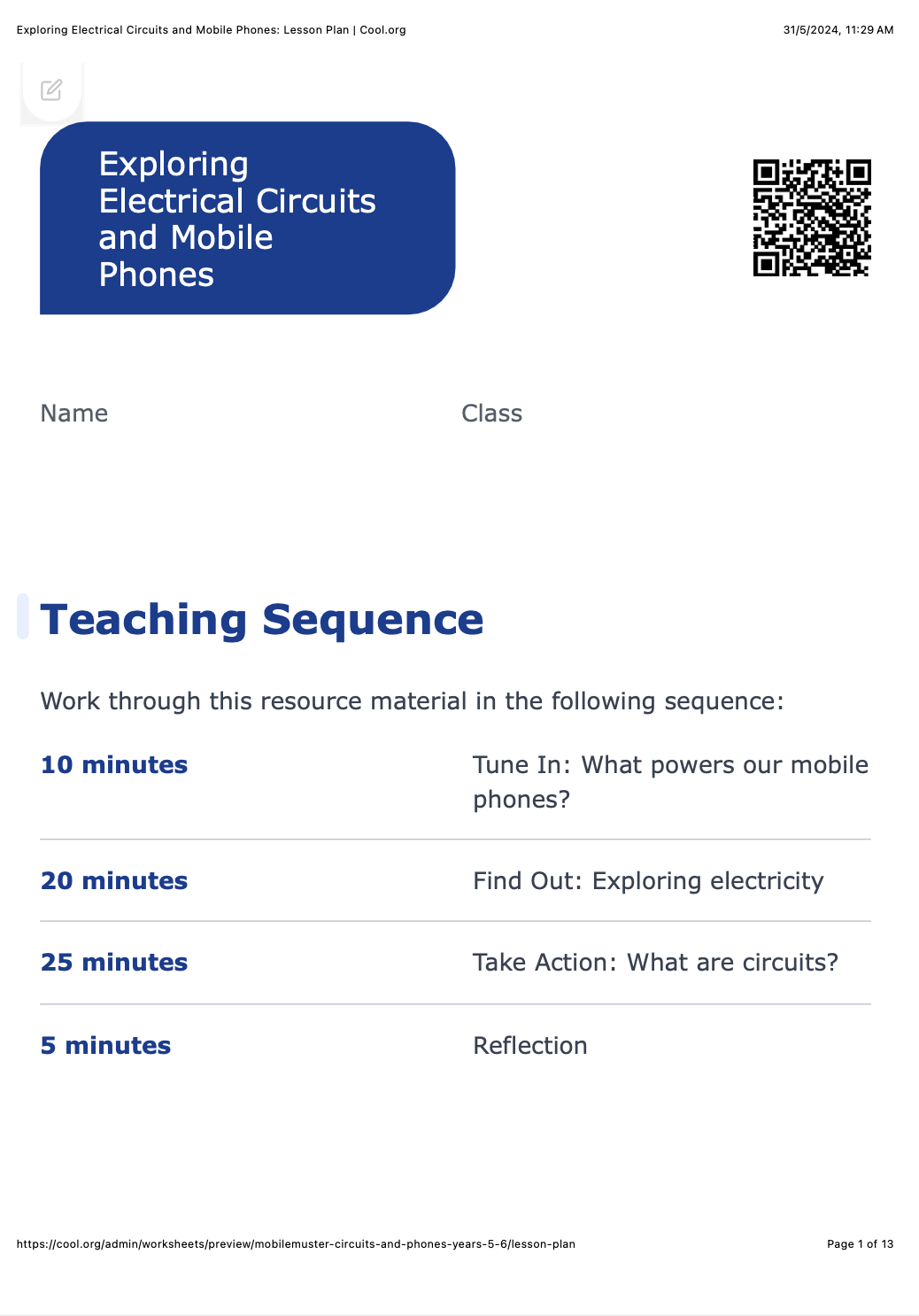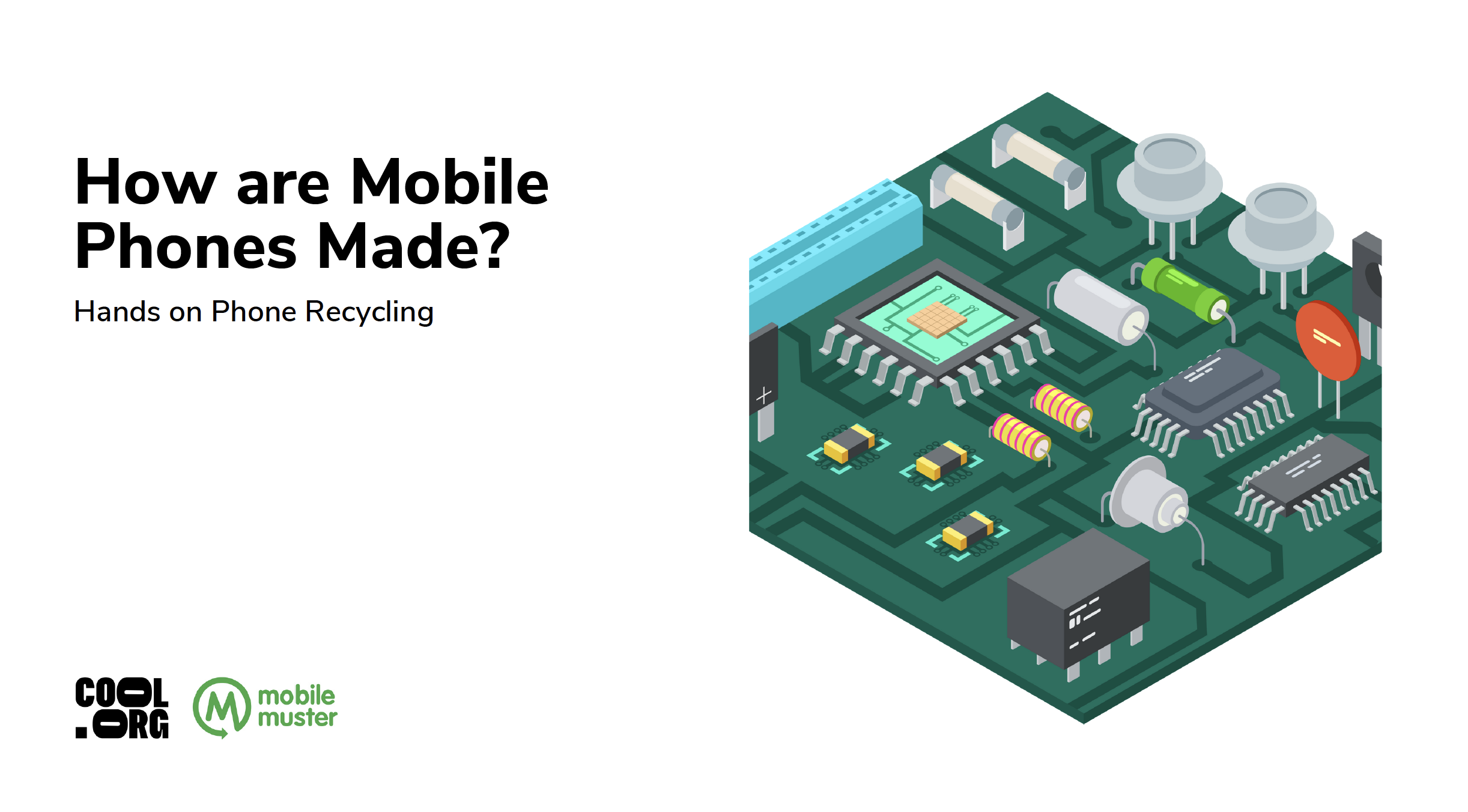Lesson summary
This lesson is part of a unit that explores how electricity and processed materials combine to power mobile phones. In this lesson, students use wires, batteries and light bulbs to learn what circuits are, how they work and how to represent them using circuit diagrams. Students will also learn what circuit boards are and understand how circuits and batteries power mobile phones.
Learning intentions:
Students will...
- understand the basics of how electricity is used in a mobile phone circuit and battery
- discover what a circuit is, how it works and how to draw a circuit diagram
- explore how mobile phone circuit boards work and what materials they contain.
Success criteria:
Students can...
- construct a working electrical circuit using a battery, wires and a light bulb, and use circuit symbols to accurately draw a diagram representing the circuit created
- evaluate the differences between traditional circuits and circuit boards in electronic devices
- explain the importance of materials in circuit boards and the significance of recycling them.
Lesson guides and printables
Curriculum links
Select your curriculum from the options below.
Lesson details
Skills
This lesson is designed to build students’ competencies in the following skills:
- collaboration
- digital literacy
- ethical understanding
- global citizenship
- problem-solving
Curriculum Mapping
Australian Curriculum (v9.0) content description:
Year 5 & 6 Design and Technology:
- explain how electrical energy can be transformed into movement, sound or light in a product or system. (AC9TDE6K02)
- explain how characteristics and properties of materials, systems, components, tools and equipment affect their use when producing designed solutions. (AC9TDE6K05)
Year 6 Physical Science:
- investigate the transfer and transformation of energy in electrical circuits, including the role of circuit components, insulators and conductors. (AC9S6U03)
Relevant parts of achievement standards:
Year 5 & 6 Design and Technology: Students can explain how the features of technologies impact design decisions and they create designed solutions.
Year 6 Physical Sciences: Students can identify the role of circuit components in the transfer and transformation of electrical energy.
NSW Syllabus outcomes: ST3-6PW, ST3-7PW, ST3-13MW, ST3-12MW, ST3-6PW
General capabilities: Critical and Creative Thinking, Personal and Social Capability
Cross-curriculum priority: Sustainability
Level of teacher scaffolding: Medium – facilitate class discussion and support students in circuit building.
UN Sustainable Development Goals
UN SDG 12: Ensure sustainable consumption and production patterns
- Target 12.5: By 2030, substantially reduce waste generation through prevention, reduction, recycling and reuse.
Resources Required
- Device capable of presenting audiovisual material
- Circuit building materials (minimum three lights e.g. LED or similar, six alligator clip wires, one battery holder and a battery between each group of four students
- Student devices for group research
Note: There is an online circuit simulator that can be used in place of physical materials. If you would like to source some materials for your class, follow the links in the Teacher Content Information.
Additional Info
This lesson has been developed as part of Planet Ark’s National Recycling Week. Following this lesson plan is an ideal way for your school to take part in MobileMuster. You’ll be joining thousands of amazing teachers in making a difference and creating positive environmental change. Take part in the Schools Recycling Right Challenge for Planet Ark’s National Recycling Week. Register your lesson or other activities today!
Related Professional Learning
How to Teach Sustainability with Hope
Quick Summary: This course is for both primary and secondary teachers of all subjects, but especially for English, Science, Humanities and Geography teachers who are covering climate change and the cross-curriculum priority of sustainability.





Welcome back!
Don't have an account yet?
Log in with:
Create your free Cool.org account.
Many of our resources are free, with an option to upgrade to Cool+ for premium content.
Already have an account?
Sign up with:
By signing up you accept Cool.org's Terms and Conditions(Opens in new tab) and Privacy Policy(Opens in new tab).